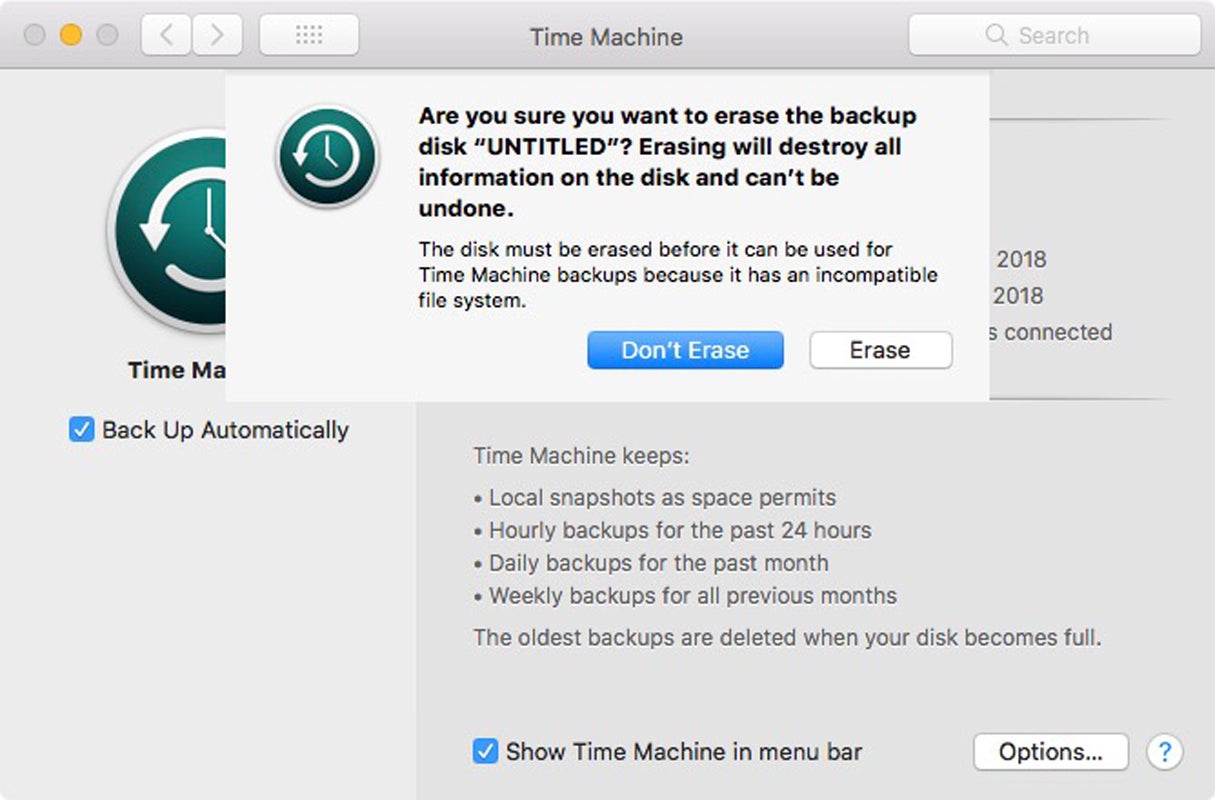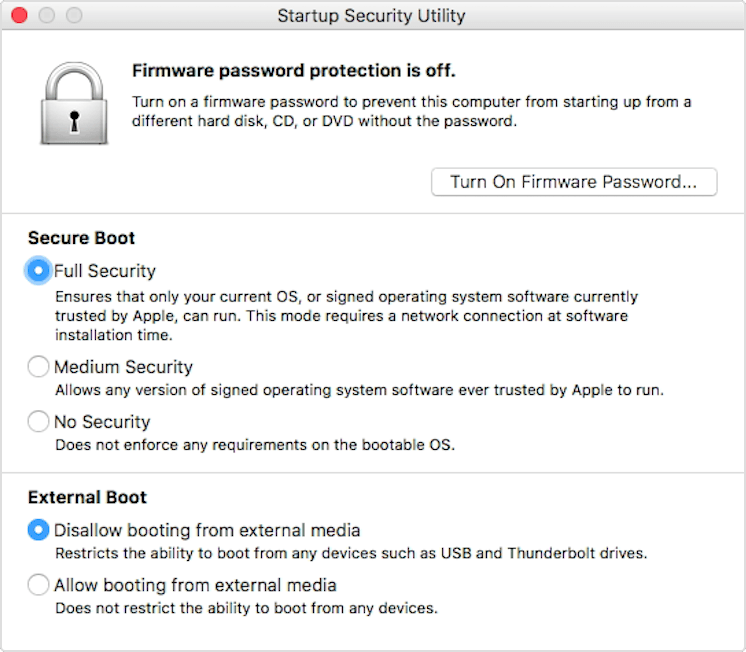What are startup items?
Startup items, or login items, are services and applications that launch every time you start your Mac. These are applications that sneak into startup items without notice, never asking if you need or want them there. This way you may end up with a dozen apps launching as soon as you turn on your Mac, weighing heavily on its processor and memory capacities and slowing it down. Such items can increase your Mac’s startup time and decrease its performance.
Select your startup disk from the list of available volumes. The next time you start up or restart your computer, your Mac starts up using the operating system on the selected volume. Temporarily change your startup disk with Startup Manager. Startup Manager allows you to pick a volume to start from while the computer is starting up. Using Disk Utility through Recovery Mode is the preferred and primary tool for repairing disks on the Mac platform, but if Disk Utility is either unavailable or not able to repair a drive, then Single User Mode and the command line tool fsck should be your next choice.
Plus, sometimes when you remove an application or a service, it leaves a login item with a broken link. These broken login items are completely useless, cause unwanted messages, and waste your Mac's resources (because they look for non-existent applications). Whether you're running macOS Catalina or El Capitan, or earlier — it's all the same, so just read on.
So, let's go over how to take control of login items, and how to get rid of unwanted, broken or hidden startup items.
How to disable startup programs?
Do you want to stop programs from running at startup? There’s an easy way to remove programs from startup and get your Mac to load faster on launch. The fastest way to turn off startup items on Mac is an app like CleanMyMac X.
- Download CleanMyMac for free.
- Launch the app.
- Open Optimization tab.
- Click on Login items.
- From the list of apps, disable the ones you don’t need on startup.
- Done!
How to change startup programs manually?
Disabling Mac startup programs is possible manually. Therefore, if you have some time and would like to do it yourself, follow the steps below.
Your login items are listed in settings. One of the easiest ways to control startup items is inside System Preferences > Users & Groups.
- Open System Preferences.
- Go to Users & Groups.
- Choose your nickname on the left.
- Choose Login items tab.
- Check startup programs you want to remove.
- Press the “–” sign below.
- You’re done.
- If you need to add an item back, press “+” and choose the app you’d like add.
- Then restart your Mac to see the changes.

How to fix broken startup items?
Broken Mac startup files are left there because some part of apps are left on your Mac long after you’ve moved the app to the Trash. To get rid of these parts and to fix your startup, you’re going to need CleanMyMac again. First, you need to check if they’re among startup items and disable them if so. You can do it following the instructions above. Then you need to remove app leftovers. CleanMyMac works fine on macOS High Sierra and earlier OS.
- Launch CleanMyMac.
- Choose Uninstaller tab.
- Scroll through the list of apps.
- If you spot any app that you’ve deleted, check them.
- Delete the app leftovers you’ve chosen.


Make Startup Disk Mac
You can also find and remove broken login items with the help of System Junk module:
- Choose System Junk tab.
- Click Scan.
- Review details and click Clean.
Finally, you need to clean your macOS startup items through launch services:
- Open Maintenance tab.
- Choose Rebuild Launch Services.
- Hit Run.
- Done.
Once you do it, all broken app data on your Mac will be fixed.
Remove daemons and agents from startup process
If speaking of files, first go to the system folder /Library/StartUpItems. Here you’ll find all the startup files that are being launched with the system. You can delete the login item you think is necessary if you’re totally sure what you are doing.
Also, the /Library/LaunchDaemons folder contains a bunch of preference files that define how the application that is being launched along with the system should work. You might want to delete some of these files as well if you know you don’t need them and removing them is safe.
The /Library/LaunchAgents contains preference files responsible for the apps that launch during the login process (not the startup).
The above-mentioned folders contain app-related files. However, you can also check system folders to review whether you need some of the system applications to be running on startup:

- /System/Library/LaunchDaemons - note that besides preference files this folder contains other important system items that are recommended to keep untouched.
- /System/Library/LaunchAgents - most probably, you won’t also find anything worth removing in this folder, however, keeping this location in mind might help you find files related to a problematic app that causes troubles on Mac startup. If you have a problematic application that messes about on login, you can try to trace it back from this folder.
But, if you’re looking for simple ways to remove login items, we suggest using a professional Mac utility. Download CleanMyMac X for free and make unwanted and broken login items a thing of the past.
When you’re trying to wipe an old Mac to set it up fresh or to give it away or sell it, you typically want to erase the drive. Sometimes, you’re thwarted.
The easiest sequence is the following:
Select > Restart if your Mac is running.
Just as the computer starts, hold down Command-R, which loads macOS Recovery.
Wait until the startup progress bar appears and release the keys. (If you see a globe, skip down to the end of the article.)
When Recovery starts up, select Disk Utility and click Continue.
Make sure you’re selecting your macOS startup partition and not the entire drive, which contains the macOS Recovery partition you’re currently using. Fom the View menu, select Show All Devices.
Select just the partition or container with macOS and click the Erase button.
Quit Disk Utility and use Reinstall macOS from the main recovery window.
It’s possible you’ll hit an error at any one of these points.
For instance, some readers report receiving the message: “Secure Disk Erase Failed—Couldn’t Unmount Disk.” This happens in a few circumstances, but most of the time because you’re trying to erase the entire disk—consult steps 5 and 6 above.
If that doesn’t help, because you’re trying to erase the entire drive, you can shift to internet-based macOS Recovery, which downloads the recovery software temporarily from the internet and can erase the entire drive. For most Macs in recent years, restart and hold down Command-Option-R. (For Macs running a version of the operating system before Sierra, the key combinations will be different.)
In a few moments, you should see a rotating globe, which indicates your Mac is pulling down the necessary files over the Internet. You’ll be prompted at some point for the name and network password for a Wi-Fi network, unless you’re connected via Ethernet to a network.
Make Bootable Disk Mac Catalina
You should now be able to proceed to erase the disk in full and reinstall a fresh copy of macOS.
This Mac 911 article is in response to a question submitted by Macworld reader Dan.
Ask Mac 911
Make Bootable Disk Mac High Sierra
We’ve compiled a list of the questions we get asked most frequently along with answers and links to columns: read our super FAQ to see if your question is covered. If not, we’re always looking for new problems to solve! Email yours to mac911@macworld.com including screen captures as appropriate, and whether you want your full name used. Every question won’t be answered, we don’t reply to email, and we cannot provide direct troubleshooting advice.
